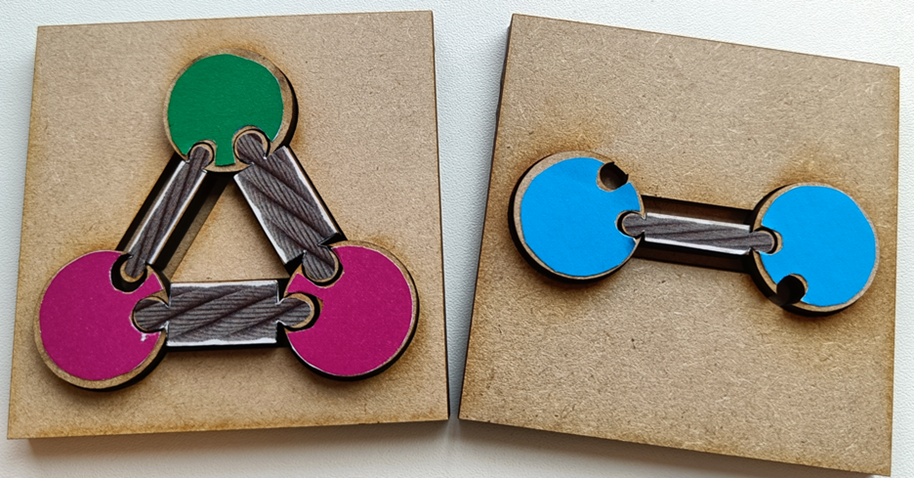Children learn that material hardness is linked to atoms and bonds by playing a game: a case study
DOI:
https://doi.org/10.17083/xk94hq07Keywords:
Particulate nature of matter, Material hardness, Primary school, Board game, Cooperative games, Game-based learningAbstract
Recent findings show that primary school children can understand aspects of the particulate nature of matter after following formal teaching interventions. We investigated whether primary school children who have not had formal lessons about atoms, can explain the hardness of materials using concepts of atoms and bonds after playing a specifically designed, cooperative resource management game. In pre-, post-, and two retention interviews, we examined the understanding of 12 children who played the game. We also investigated the children’s interest/enjoyment and effort expectancy about the game. Half of the children justified material hardness by atoms and bonds throughout all interview phases, three missed out on one of the post-interviews, and the remaining three responded otherwise or had other prior knowledge about atoms before playing. Additionally, the usability of the game was assessed by 7 primary school teachers. The participating teachers were not formally trained in chemistry but could play the game and confirmed their willingness to use it to teach material properties in primary school. These findings support that games can ignite the formation of abstract but fundamental science concepts in children’s thinking. The authors suggest that atoms can be introduced into primary school by using games.

Downloads
Additional Files
Published
Versions
- 2025-08-04 (3)
- 2025-08-04 (2)
- 2025-07-29 (1)
Issue
Section
License
Copyright (c) 2025 Michael Dumin, Ilse Smets, Carole Haeusler

This work is licensed under a Creative Commons Attribution-NonCommercial-NoDerivatives 4.0 International License.
IJSG copyright information is provided here.